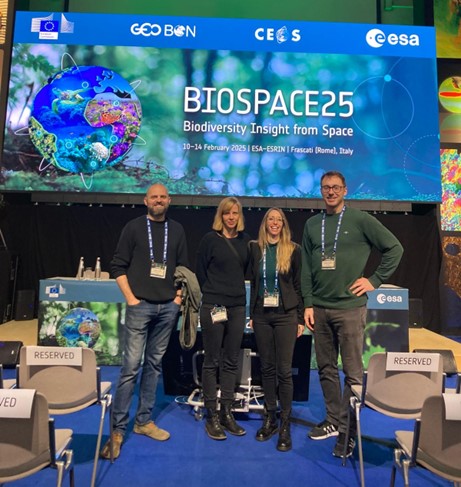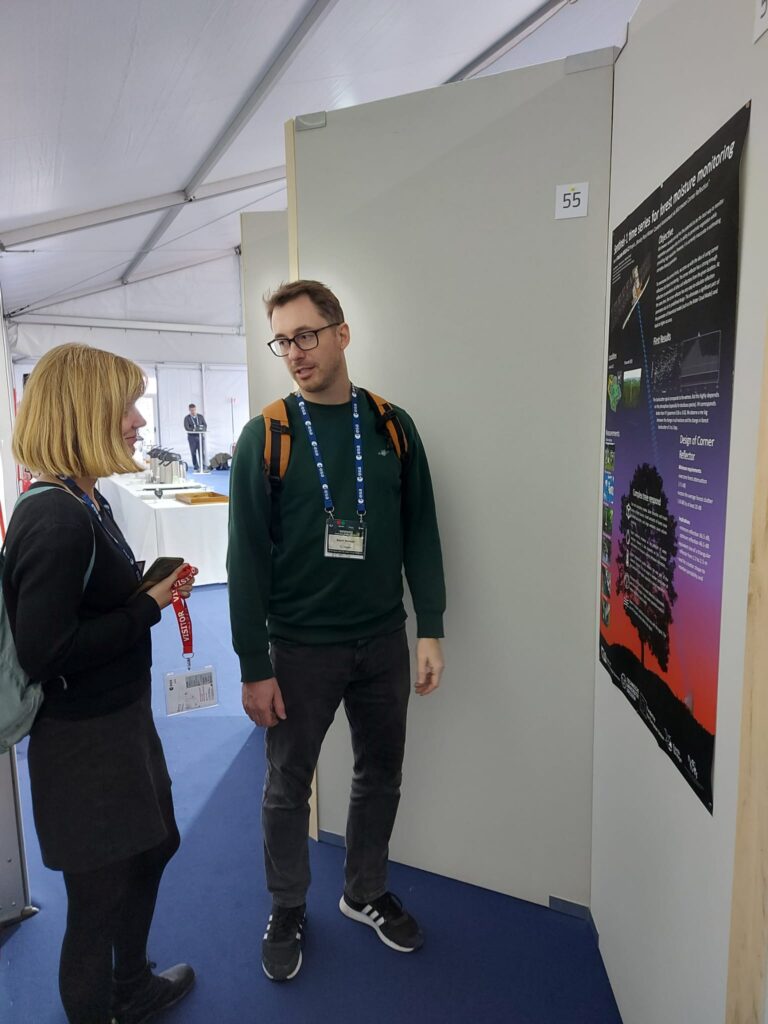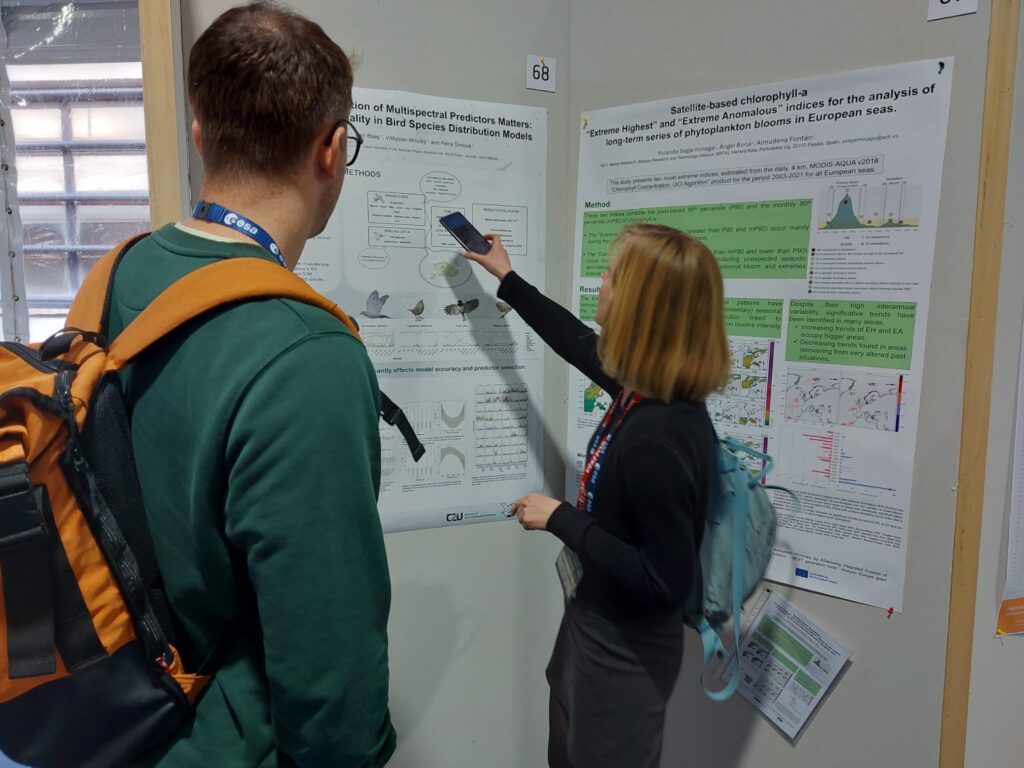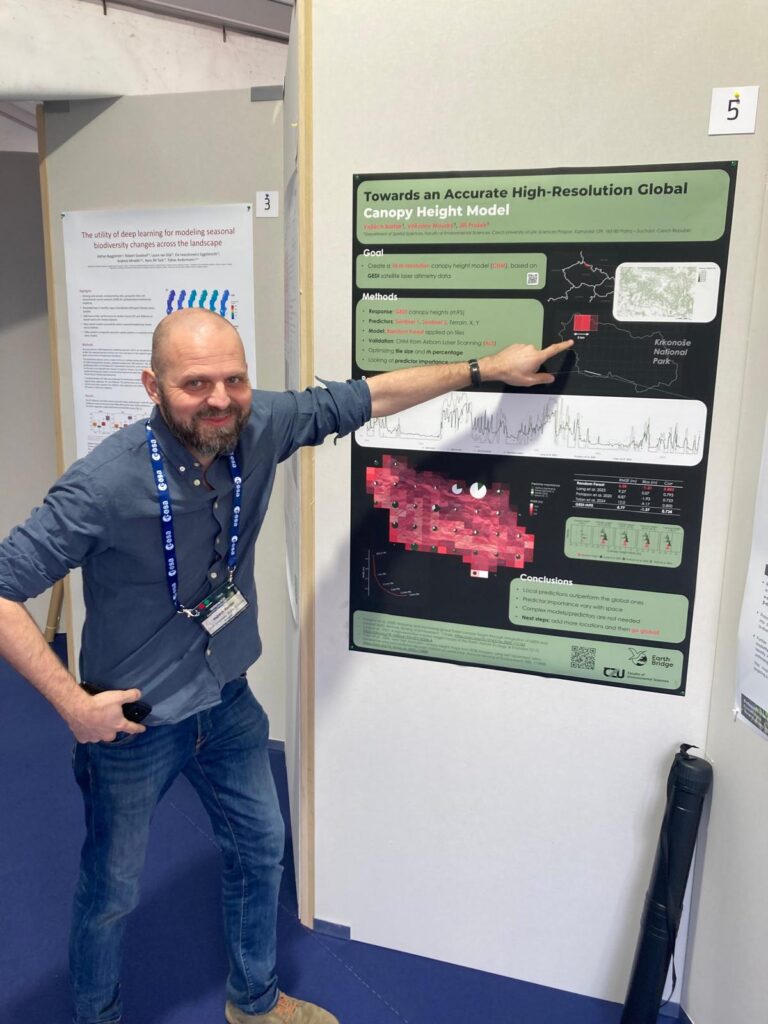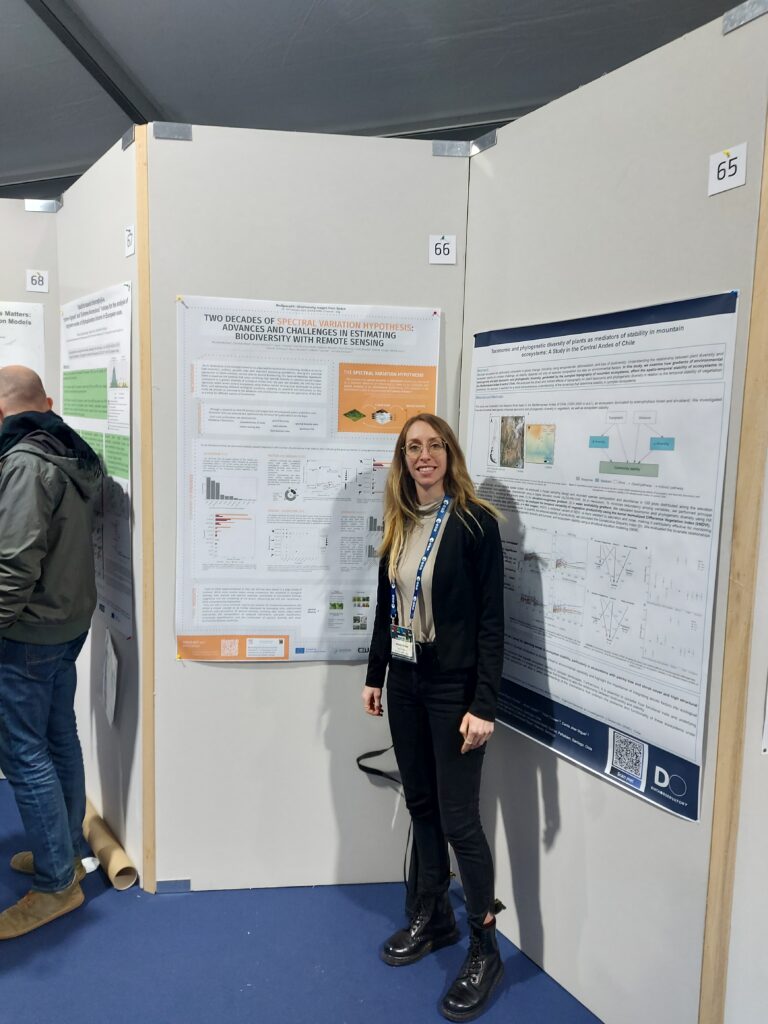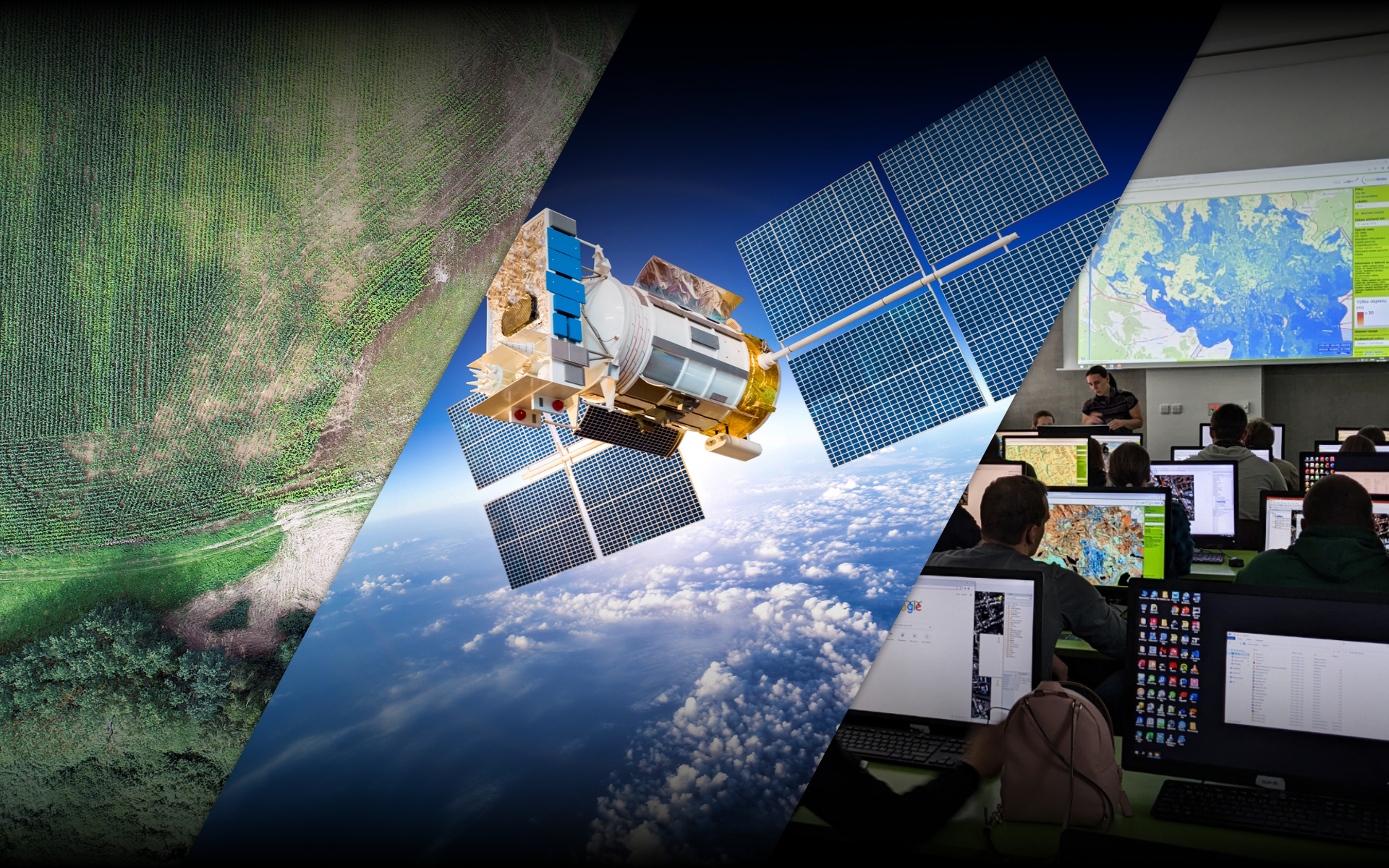Authors: Michela Perrone, Dominika Prajzlerová, David Moravec, Vojtěch Barták
The BioSpace25 conference just ended, and it was a blast!
Last week, my colleagues (Dominika, David, and Vojta) and I had the incredible opportunity to participate in the BioSpace25 conference hosted by the European Space Agency (ESA) at its Centre for Earth Observation (ESRIN) in Frascati, Italy. We spent the past five days listening to outstanding talks, participating in fruitful workshops, attending live demonstrations, and engaging in fruitful discussions with other participants, all in the name of Earth observation for biodiversity.
Indeed, this was the first international conference exclusively dedicated to the application of Satellite Remote Sensing (SRS) across the various dimensions of biodiversity, and addressing the use of Earth observations in all realms, from terrestrial, freshwater, coastal to marine ecosystems.
The BioSpace25 participants belonged to an interdisciplinary and cross-sectoral community made of specialists in satellite remote sensing for biodiversity, biodiversity scientists, field ecologists, biodiversity monitoring practitioners, data providers and biodiversity policy stakeholders from governments, international organizations and NGOs. A great example of building bridges between fields and expertise!
One of the highlights of our participation was presenting our work at the poster session. While I was talking about spectral diversity in front of my poster titled “Two decades of Spectral Variation Hypothesis: advances and challenges in estimating biodiversity with remote sensing”, Dominika was discussing “The role of seasonality in remote sensing predictors for bird species distribution models”. David, instead, was committed to showing the great potential of radar data by speaking about “Sentinel-1 time series for forest moisture monitoring”. Finally, Vojta was showing to the audience the importance of going “Towards an Accurate High-Resolution Global Canopy Height Model”.
Standing by our posters, we had engaging discussions with scientists from different disciplines, exchanged ideas with ESA representatives, and explored new potential collaborations. The interest in our work was truly motivating, and the feedback we received will help us refine and expand our research even further.
Beyond our own presentation, BioSpace25 was a fantastic learning experience. Some key highlights included:
- Cutting-Edge Earth Observation Technology: The conference emphasized how advancements in remote sensing are transforming biodiversity monitoring.
- Interdisciplinary Collaboration: We saw firsthand how bringing together experts from different fields leads to innovative solutions for biodiversity challenges.
- The Future of Space-Based Ecology: Discussions about upcoming satellite missions and AI-driven data analysis demonstrated how rapidly the field is evolving.
Finally, I want to say a big thank you to the organizers and all the incredible researchers we met! We’re excited to continue our work and contribute to the ever-growing dialogue on biodiversity monitoring from space.
See you at the next BioSpace event!
Michela
